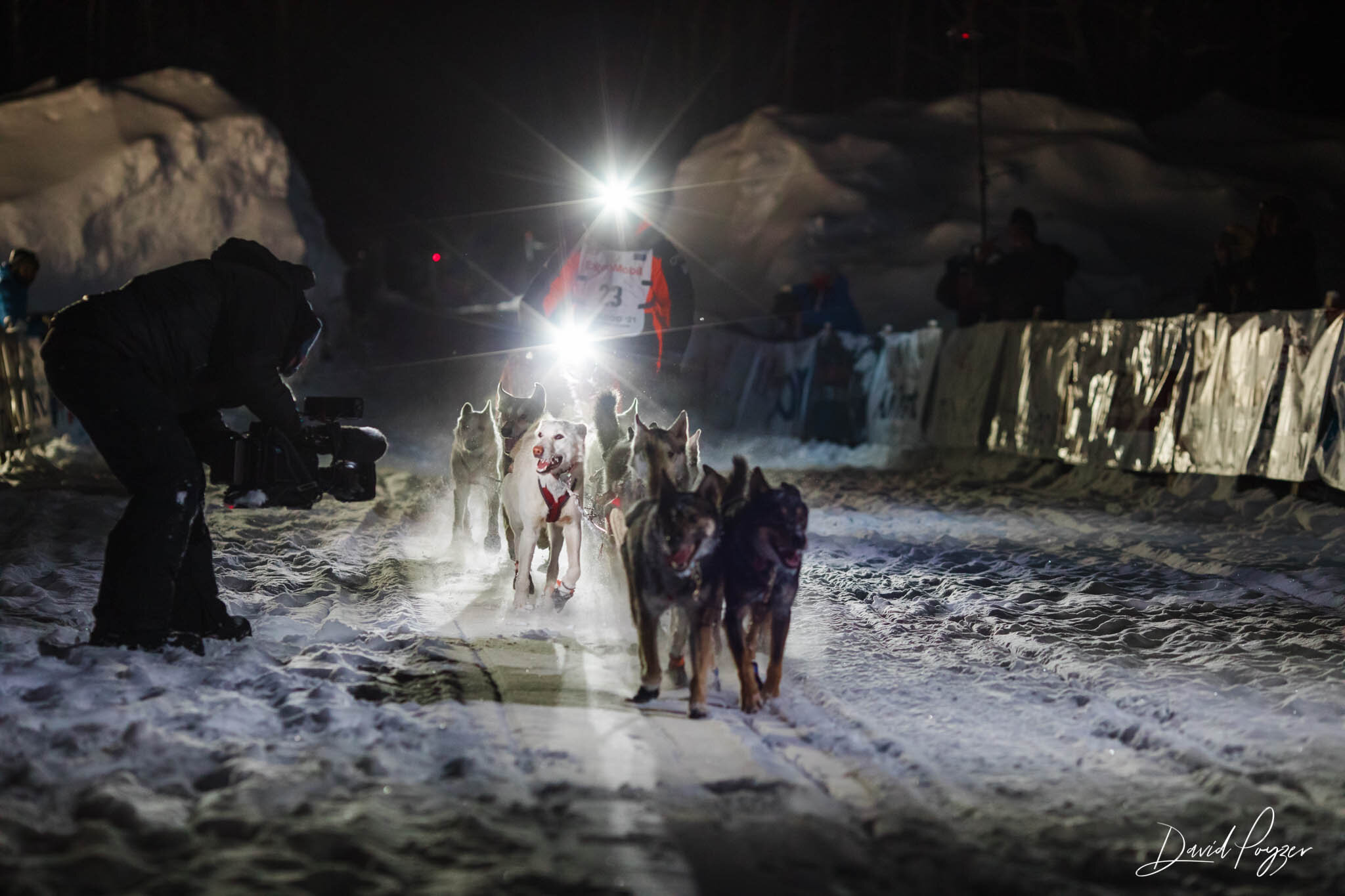A Race To Remember
The Iditarod 2021 will be remembered for three things: That none of the mushers ever reached Nome, the historical 5th win of Dallas Seavey – and a virus.
Race Recap | Iditarod 2021
The Covid-19 Edition
Iditarod 2021 - the race where Covid-19 was upon us. Photo: Dave Poyzer
Let us start with the latter – the virus. COVID-19 made huge impacts both for The Iditarod Trail Committee and ultimately the mushers. Fear of viral spreading, the committee required to keep interaction between mushers, handlers, press and local residents to an absolute minimum. The ceremonial start was cancelled, and the historically 1000-mile route from Anchorage to Nome was altered, to an out-and-back trail. The start was set in the more remote Deshka Landing in Willow, about 90 minutes north of Anchorage. The race then trailed the classical route all the way to Iditarod, where they revolved and followed the same trail back. Populated checkpoints like Yentna and Takonta were avoided, and new checkpoints were located near remote lodges and in ghost towns. The round-trip, entitled “Gold Trail Loop”, meant that the teams had do head-on passings and to cross the puzzling Alaska Range twice. But then again - they avoided the windy Bering Sea coast.
This is actually not the first time Iditarod teams have done head-on passing. The same thing occurred in 2003, due to warm weather and low snowfall. After the ceremonial start in Anchorage, the trail committee restarted the race in Fairbanks. The teams ran all the way down Yukon River to Anvik, then turned around and went back to Kaltag, meeting each other, then on the overland to Unalakleet, and to Nome.
The Return Of The Favourite
And now for this years race. Dallas Seavey was a huge favourite. The 34 year old and third-generation musher ran his first Iditarod at age 18. At age 25, he became the youngest musher ever to win, and since he has won Iditarod three more times. The last victory in Iditarod 2017 had a bitter flavour. He ended up with an exhausting doping allegation. After a turbulent and confusing year in a public battle involving lawyers, toxicologists and PR firms, The Iditarod Trail Committee finally cleared him of any wrongdoing. Havocked by the turmoil he decided not to participate for the next three races.
Brent Sass (in the picture) and Aaron Burmeister were giving Dallas Seavey serious competition all the way to the line. Photo: Dave Poyzer
But this year he was back on the sled, and the 50.000 $ question was if he could take home the Iditarod title for the fifth time.
Team Dallas Seavey rolling into the finish line at Deshka Landing to his fifth Iditarod win. Photo: Dave Poyzer
Well, he did. Dallas and his team were in the lead packs from the very beginning. He was the first to reach Iditarod, and the first to leave, starting the long way back home through the freezing wilderness. He and his dogs were in great shape both mentally and physically, and they kept the lead through most of the race. The only who could threaten him at the end, were the veterans Brent Sass and Aron Burmeister. Dallas Seavey and his lead dogs North and West showed their competiveness, and were first up the infamous Dalzell Gorge, and it appeared like only an accident or a total collapse could stop his race to finish. Neither happened, Dallas kept the lead into the checkpoint in Rainy Pass. He rested for three hours, while Aron Burmeister bursted through. At Skwetna Dallas dropped three of his dogs, and took the last mandatory rest of eight hours. He left the checkpoint first to start the final leg.
Seavey, Burmeister and Sass
At 5 AM in the morning, he and his ten remaining dogs crossed the finish line in Deshka Landing after 7 hours, 14 hours, 9 minutes and 57 seconds.
Aron Burmeister finished close to three hours later, while Brent Sass finished third.
2022 marks the 50th anniversary of Iditarod. Fingers crossed there will be more flags on top of the arch next year. Photo: Dave Poyzer
Dallas Seavey broke a 30 year old record, and is now tied with mushing legend Rick Swenson with five total championships.
Next year Iditarod celebrates 50th anniversary. Hopefully the world - and the last great race - has turned back to normal.
Thank you for following - see you next year!





